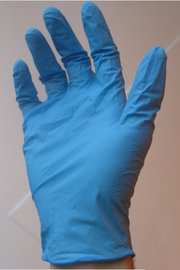First aid kit
|
|
fr:Trousse de secours it:Cassetta di pronto soccorso
A first aid kit is a collection of supplies and equipment for use in giving first aid, particularly in an emergency. Most first aid kits contain bandages for controlling bleeding, personal protective equipment such as gloves and a barrier for performing rescue breathing and Cardiopulmonary resuscitation, and sometimes instructions on how to perform first aid.
| Contents |
Placement
It is widely recommended that all households and workplaces have a first aid kit. The first aid kit should be kept in a clearly marked bag or container in an easily accessible location.
First aid kits should be placed in all vehicles with the size and nature of the kit in proportion to the vehicle's range and potential distance from help. Commercial aircraft carry a comprehensive first aid kit often including cardiac drugs.
Every workplace should have a first aid kit readily available. Larger first aid kits are required based on the size of the workplace and any potential hazards (such as working with machinery). Often the security guard will have or know the location of a first aid kit and be trained in first aid. There are usually legal regulations for the standard contents of a first aid kit required in different situations (for example, in the US those set by the Occupational Safety and Health Administration and in the UK set by the Health and Safety Executive).
The host of any large gathering of people is responsible for responding to any potential medical emergency. This includes making sure that a responsible person has ready access to a first aid kit.
Schools keep a first aid kit in the main office, whether or not there is a designated nurse. Coaches and other athletic trainers should keep a first aid kit handy during sporting events.
Soldiers carry a rudimentary first aid kit attached to their belt or harness. It often contains a field dressing and powders or ointments to stop bleeding or prevent infection. It is a military rule that you always use the injured person's first aid kit, not your own, to tend to their injuries. You may be needing yours later.
Paramedics, EMTs and other prehospital emergency providers such as combat lifesavers usually carry a comprehensive first aid kit. Often called a "jump kit," this is a large duffel bag, sometimes with a logo on the side. Some of the supplies in a jump kit are beyond the skill of a typical first-aid provider, but common first-aid supplies are also carried.
Lifeguards must have quick access to a well-stocked first aid kit at their place of employment. In Canada, they are trained to the level of "Standard First Aid," and can deal with many first aid situations from a stubbed toe to a victim with C-spine injuries and absent vital signs. Obviously, a lifeguard is no replacement for a paramedic or doctor, but if you require care and a lifeguard is nearby, remember that they have training and a duty to act. Generally speaking, you may not use their first aid kit; they will have to provide care, and write a report per the regulations in your geographical area and the workplace.
Contents
A generic first aid kit is better than nothing. However, the contents of a first aid kit should be optimized for local conditions. For example, a kit for hikers in snake country should have a snakebite kit. A kit aboard a boat should have medications for seasickness.
One list of items for a first aid kit are as follows:
Dressings
Sparadrap_2.jpg
- Adhesive bandage strips (sticking plasters)
- Sterile dressings (consisting of an absorbent pad attatched to a roller bandage)
- Dressing pads:
- Sterile eye pads
- Sterile gauze pads
- Sterile nonadherent pads
- Hypoallergenic adhesive tape
- Bandages:
- Butterfly bandages
- Roller bandages
- Elastic bandages
- Triangular bandages
Instruments
Equipment
- Sterile non-woven swabs
- Eye cup or small plastic cup
- Instant-acting chemical cold packs
- Paper cups
- Space blanket (lightweight plastic foil blanket)
- Non-latex disposable gloves
- Disposable apron
- CPR face shield or other breathing barrier
- Thermometer
- Flashlight
- Sterile eye wash (commonly saline)
- Sterile saline may also be used for cleaning wounds where clean tap water is not available.
Medication
- Activated charcoal
- Antiseptic wipes or antiseptic solution
- Antiseptic/anesthetic ointment or spray
- Calamine/antihistamine lotion
- Painkillers
- Aspirin - one 300mg Aspirin tablet may be given to a patient suffering a heart attack, to be chewed slowly.
Note that regulations some jurisdictions prohibit the provision of "medication" in a workplace first aid kit.
Improvisation
First aid can be performed without a first aid kit. Any cloth (preferably as clean as possible) can be used as a bandage. Duct tape could also be used to secure a dressing. Common household items such as a magazine or even sticks can be used for splints. Direct pressure to stop bleeding can be applied with a hand if nothing else presents itself. Obviously it is better to have proper equipment, but improvised equipment has saved many lives.
External Link
- Emergency Institute (http://www.emergencyinstitute.us)
- HealthWorld Online - Emergency & First Aid (http://www.healthy.net/clinic/firstaid/)
- First aid tips and tutorials (http://med.mywebcities.com)
- VBgov.com - First Aid Tips (http://www.vbgov.com/dept/ems/firstaid/)


